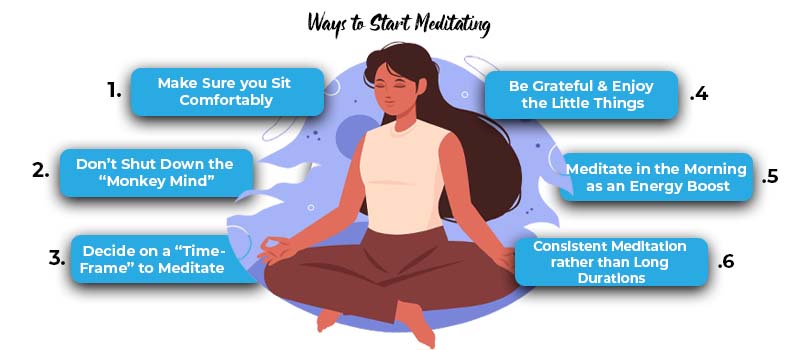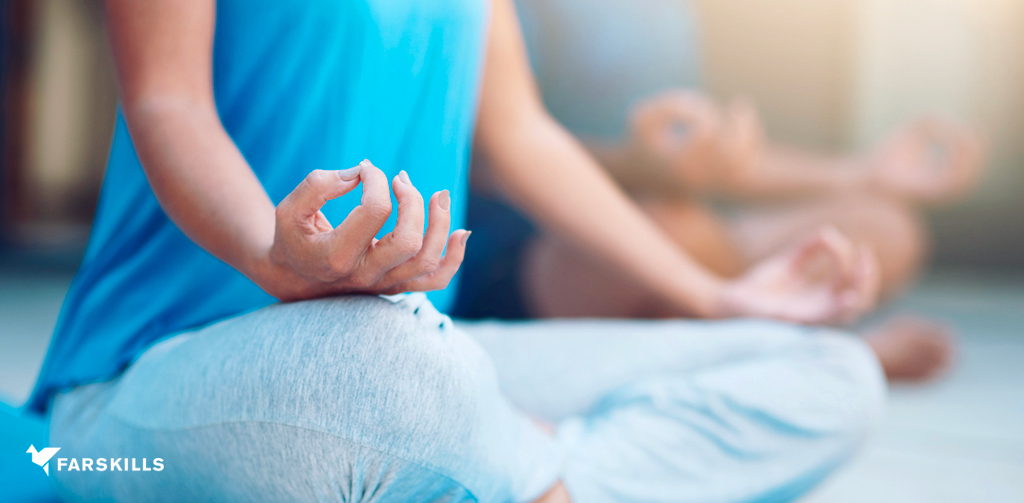Well, whether you are a brand new mediator or haven’t meditated in a long time, here’s a guide to mindfulness meditation for beginners.
Basics of mindfulness meditation for Beginners
Meditation usually begins with you sitting in a peaceful place, close your eyes, and calming your mind while focusing on your breathing. But there is usually way more to mindfulness meditation for beginners than to sit quietly and breathe. When you are meditating, you are training your mind to hinder being easily distracted and instead allowing it to be more attentive in the present moment.
You are building mindfulness and compassion. You simply sit and practice letting thoughts and feelings come and go as the breath serves as an anchor.
When you begin to meditate, your mind will inevitably begin to wander. And that’s a normal process.
You must not forget that mindfulness meditation for beginners does not aim to stop the mind from thinking; rather, it aims to bring awareness to the process of thinking itself. The goal of your exercise is to become adept at seeing your own thinking without becoming enmeshed in it. You can manage your restlessness by becoming more conscious of the time when your focus has strayed from the task at hand. Every time you notice you are distracted, you reconnect your awareness and bring your attention back to its main purpose.
Through the process of mindfulness meditation for beginners, your mind may grow content with the concept of being calm and focused in the face of distractions, and you may begin to integrate the qualities of meditation - composure, locus, empathy, mindfulness - in your day to day activities.
When and Where to Begin Meditating?
If you are able to follow these easy steps, learning to meditate should be a breeze.

Decide on a time and location that works best for you
In order to establish a new habit, it’s best to do it every day at the same time and in the same place. The greatest moment to meditate isn’t when you plan to do it; it’s when you really do it. And what’s the greatest spot for mindfulness meditation for beginners’ sessions? Well, it’s whenever and wherever you feel most at ease and have the least amount of distractions.
Decide on a “Set Period” to Meditate
In order to build up your practice and locate your sweet spot, it’s critical for beginners to begin with tiny, manageable chunks of time, such as 3, 5, 10-minute sessions. Decide on a time frame that works for you, but also one that you can commit to consistently.
Make Sure you Sit Comfortably
It’s best to sit with your feet on the floor and hand either by your side or on the floor, uncrossed. Straighten your back but do not become overly tense. A rolled-up towel might help you keep your back in an upright position.
Meditate in the Morning
A morning mindfulness meditation for beginners, rather than a late-night one, is recommended by Researchers because it provides the energy you need to reach your highest potential and be who you truly are as a human being. Meditation, not sleep, is the goal of the practice. Sitting 15 minutes a day is what meditators recommend, but if that seems like too much, you can start with five minutes and work your way up from there.
Be Grateful
The focus of mindfulness meditation for beginners might revolve around one thought or feeling, and that is gratitude. You can start by closing your eyes to all the things important in your life and being thankful for them. Starting with parts of the body, healthy or not, everything shapes us and makes us who we are. Connect to the awe and wonder at the miracle of life, which research shows can have a positive impact on your well-being. Astonishingly, our hearts beat 100,000 times a day and our lungs fill with more than 20,000 breaths without us even realizing it. There are multiple research studies that show that expressing thankfulness boosts our feelings of hope and contentment, so it’s best to spend a few moments being thankful. According to a famous saying “a body achieves what the mind believes”.
Don’t Shut Down the “Monkey Mind”
You must have heard judging your thoughts as they bubble up and release them during meditation. Meditation experts counter this advice and suggest that we should indulge in our thoughts as they may trigger us. Rather, you must go with the flow. In other words, you must swim through the feelings that emerge during the meditation. Experts say that embracing the feelings and emotions without restraining or fighting them will gradually settle your mind.
Consistent Meditation rather than Long Durations
Meditating day after day is essential. It is necessary to maintain consistency with so many distractions and priorities. For mindfulness meditation for beginners, frequency is better and shows more promising results rather than increased duration. In simple words, meditating 15 minutes a day for 5 days a week is more profitable both mentally, emotionally, and physically than 65 minutes a day in one week. Slow and steady meditation allows your brain to adapt at its own pace.
Final Thoughts
Consistent mindfulness meditation for beginners will allow you to become more confident during the process. Confidence through mindfulness meditation is the key to the days when meditation feels like a challenge or might not happen at all. The more you meditate, the better you’ll be able to perform and lead a stable life. As you become more comfortable with meditation, you can accept the fact that some days meditation may seem easier and some days may require effort. Whatever is the case, learning to practice mindfulness is a slow and steady process.



